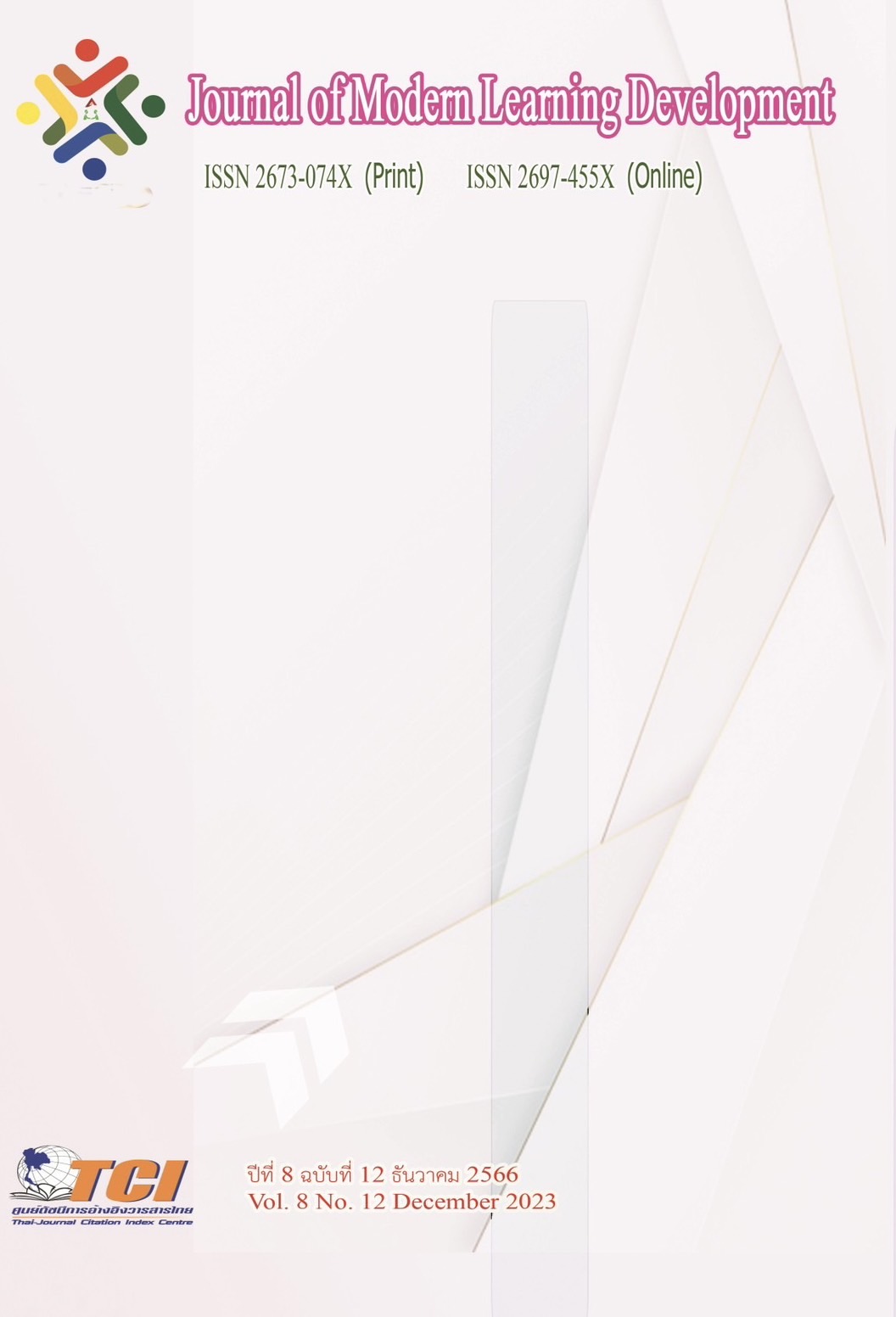Sisaket Local Languages Preservation
Main Article Content
Abstract
As appreciation of cultural diversity is listed as one of the SDGs goals related to quality education, the importance of acknowledging youth to learn about their language and cultural uniqueness is vital. This study, therefore, aimed at exploring how youth perceive the importance of their ethnic languages, so further language maintenance and teaching could be promoted. The youth speakers of Laos, Khmer, Suay and Yer ethnic groups residing in Sisaket, one of the provinces in the lower Northeastern part of Thailand were interviewed to investigate their attitude about their willingness to continue using their ethical languages in different domains in life. Four participants, a representative from each ethnical language, were invited to join the focus group interview. Thematic analysis was taken place to revealed factors according to language usage and maintenance of the participants. The data identified nine codes related to language use among youth in Sisaket, including social context, language purpose, interlocutor evaluation, language ability, positive and negative response, theme selection, public attention, and pride. These codes were categorized into three main themes: social context and language use, purpose of conversation, and attitude towards a particular language. Results from this study can be useful for preparing lessons to include a topic for discussion such as language loss, and revival, so youth can become aware of cultural diversity in their area.
Article Details
References
Baker, W. (2008). A critical examination of ELT in Thailand: The role of cultural awareness. RELC journal, 39(1), 131-146.
Baker, W., & Jarunthawatchai, W. (2017). English language policy in Thailand. European journal of language policy, 9(1), 27-44.
Barelli, M. (2012). Free, prior and informed consent in the aftermath of the UN Declaration on the Rights of Indigenous Peoples: developments and challenges ahead. The International Journal of Human Rights, 16(1), 1-24.
Bianco, J. L., & Slaughter, Y. (2016). Recognizing diversity: The incipient role of intercultural education in Thailand. In Learning from difference: Comparative accounts of multicultural education (pp. 191-219). Springer, Cham.
Dorian, N. C. (2016). Language death. University of Pennsylvania Press.
Grenoble, L. A., & Whaley, L. J. (2005). Saving languages: An introduction to language revitalization. Cambridge University Press.
Grenoble, L. A. (2011). Language ecology and endangerment. na.
Harrison, D. (2007). When languages die. Oxford University Press. New York
Hinton, L. (2001). Language revitalization: An overview. The green book of language revitalization in practice, 3-18.
Kaur, A., Young, D., & Kirkpatrick, R. (2016). English education policy in Thailand: Why the poor results?. In English language education policy in Asia (pp. 345-361). Springer, Cham.
Larparporn, K. (2018). Community learning centers for ethnic language and culture revitalization: A case study of the So (Thavung), Nyaw, Phutai, and Lao. In S. Premsrirat & D. Hirsh (Eds.), Language revitalization: Insights from Thailand (pp.177-197). Berne, Germany: Peter Lang.
Nettle, D., & Romaine, S. (2000). Vanishing voices: The extinction of the world's languages. Oxford University Press on Demand.
Patton, M.Q. ( 2002). Qualitative evaluation and research methods (3rd ed.). Thousand Oaks, CA: Sage.
Premsrirat, S., & Burarungrot, M. (2018). Patani Malay-Thai bi/multilingual education in Thailand’s deep south. In S.Premsrirat, & D. Hirsh (Eds.), Language revitalization: Insights from Thailand (pp. 239 ̶ 249). Burn; Burlin: Peter Lang.
Premsrirat, S., & Malone, D. (2003). Language development and language revitalization in Asia. SIL International, Mahidol University.
Premsrirat, S., & Rojanakul, N. (2015). Chong. In J. Mathias & P. Sidwell (Eds.), The handbook of Austroasiatic languages (pp.603-640). Leiden, Netherlands: KoninklijkeBrill.
Premsrirat, S., Ungsitipoonporn, S., & Choosri, I. (2007). Prasopkaan kaan funfoo phaasaa Chong nai Prathet Thai koranee phaasaa Chong changwat Chanthaburi [Experiences of Chong language revitalization – the case of Chong in Chanthaburi province]. ChiangMai, Thailand: The Thailand Research Fund Regional.
Saydee, F. (2014). Loss of culture, loss of language: An Afghan-American community. Journal of the National Council of Less Commonly Taught Languages, 16, 87-109.
Siripen, U., & Kumaree, L. (2019). Comparison of approaches for language revitalization of Northern Khmer in Thailand. International Journal of Society, Culture & Language, 7(1), 52-66.
Sułkowski, Ł. (2009). Interpretative approach in management sciences. Argumenta Oeconomica, 2(23).
Ungsitipoonporn, S. (2018). The impact of the Nyah Kur language revitalization. In S. Premsrirat & D. Hirsh (Eds.), Language revitalization: Insights from Thailand (pp.81 ̶ 103). Berne, Germany: Peter Lang.
Ungsitipoonporn, S., Watyam, B., Ferreira, V., & Seyfeddinipur, M. (2021). Community Archiving of Ethnic Groups in Thailand. Language Documentation & Conservation, 15, 267-284.


